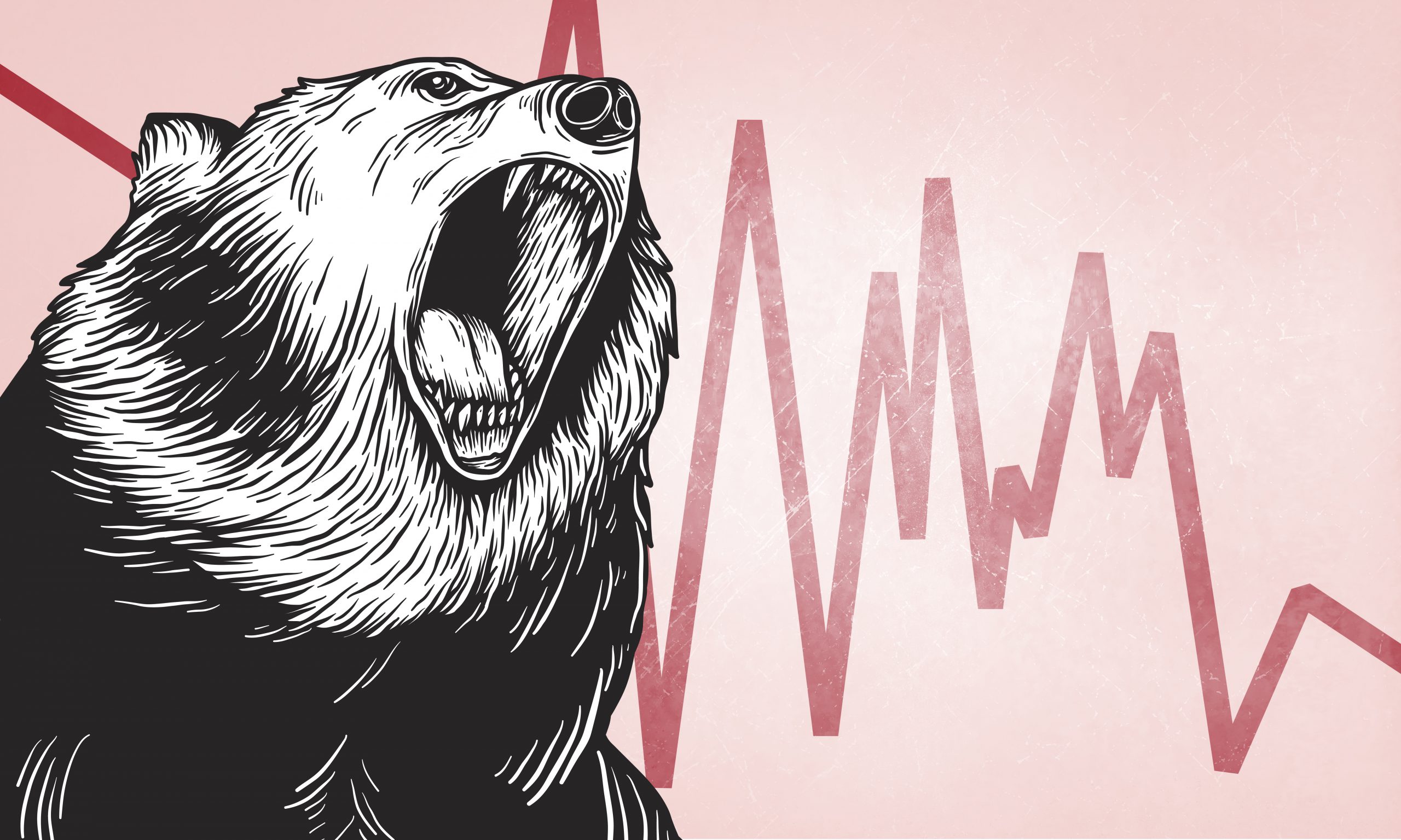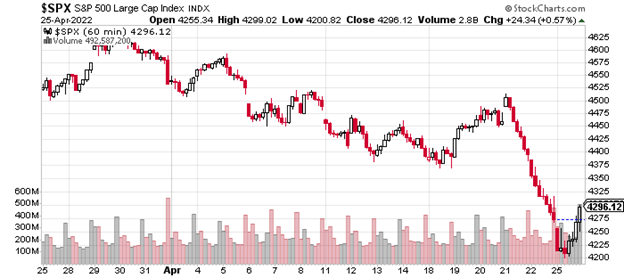
(Please enjoy this updated version of my weekly commentary published April 25th, 2022 from the POWR Growth newsletter).
As usual, we will start by reviewing the past week…
Here is an hourly, 3-week chart of the S&P 500:

We are down by 2.2% over the last week and at today’s low, this decline was closer to 4.4%.
Most of this weakness has taken place over the last 3 trading sessions as the market’s bounce attempt last week was quickly annihilated.
Unfortunately, this means that we are back in a more defensive position with a focus on maximizing and preserving mental and financial capital for when market conditions do get more constructive.
As noted in the commentary, one of the underpinnings of the bull case was that the economy would be strong enough to withstand the marginally, negative impact of higher rates.
Higher rates mean some multiple compression and cooling off of risk appetites, but stocks can still move higher with sufficient earnings growth.
But, this pleasant state of affairs can turn turbulent if earnings (or earnings expectations) start dropping as rates move higher.
And, this combination of factors is often behind some of the most devastating moves lower in market history.
Support Levels
In last week’s commentary, we discussed 2 key support levels. One was broken last week at 4,350. This was our “tell” regarding short-term market direction. As this level was broken, we increased our cash position.
The next crucial support for the market is the 4,100 level which is the February low. While the S&P 500 is still about 5% above these levels, the Russell 2000 and Nasdaq are much closer. At today’s low, both indices were about 1-2% above these critical levels.
My hunch is that a retest of these lows is imminent and a failure is likely.
An Observation
There was one interesting and unexpected development in today’s trading. And, I do think it is a marginally, positive sign.
Part of what short-circuits market selloffs is that money moves into the bond market which pushes rates lower and makes stocks more attractive. Given the Fed’s focus on inflation, this process is not as potent and not providing its usual support.
Therefore, we have seen both bonds and stocks sell off so far in 2022. However, today was different as Treasuries did catch a bid, and we saw that some of the most oversold parts of the market actually outperform for the first time in a while.
In fact, this market environment is an inverse of what we experienced from March 2020 to February 2021 which was the most intense and speculative period for the stock market in recent history.
This period was marked by the Fed being extremely easy and on top of that it had signaled a new framework for inflation to let it run above its 2% target in an effort to undo some of the damage created by years of inflation below trend.
During this timeframe, good news was good because it implied more earnings growth and didn’t bring about any risk of Fed tightening. Bad news was also good, because it simply meant more monetary and fiscal stimulus.
Now, good news is bad, because it means a more hawkish Fed. And bad news is bad, because it just means less earnings growth or a drop in earnings without any Fed accommodation that would ease the pain.
Portfolio Strategy
From a bottom-up perspective, not much has changed with our portfolio but a lot has changed from a top-down one.
We will be going back to our defensive stance which we held onto for much of January and February. This simply means we will be more aggressive in cutting losers and taking profits.
This is a time for small bets and thinking about the downside rather than taking big swings and going for home runs.
Think about it like we’re facing an elite pitcher with a fresh arm. Success in this scenario might mean extending the pitch count and getting on base. If we are facing a tired reliever, then our expectations and criteria for success would be much higher.
In terms of our portfolio composition, we did reduce exposure to cyclical and increase exposure to some more of the ‘slow and steady’ stocks that are working in this environment.
What To Do Next?
The POWR Growth portfolio was launched in April last year and has significantly outperformed the S&P 500 since then.
What is the secret to success?
The portfolio gets most of its fresh picks from the Top 10 Growth Stocks strategy which has stellar +48.22% annual returns.
If you would like to see the current portfolio of growth stocks, and be alerted to our next timely trades, then consider starting a 30 day trial by clicking the link below.
About POWR Growth newsletter & 30 Day Trial

SPY shares . Year-to-date, SPY has declined -12.12%, versus a % rise in the benchmark S&P 500 index during the same period.
About the Author: Jaimini Desai

Jaimini Desai has been a financial writer and reporter for nearly a decade. His goal is to help readers identify risks and opportunities in the markets. He is the Chief Growth Strategist for StockNews.com and the editor of the POWR Growth and POWR Stocks Under $10 newsletters. Learn more about Jaimini’s background, along with links to his most recent articles.
How Higher Rates Could Continue to Negatively Impact the Market StockNews.com






